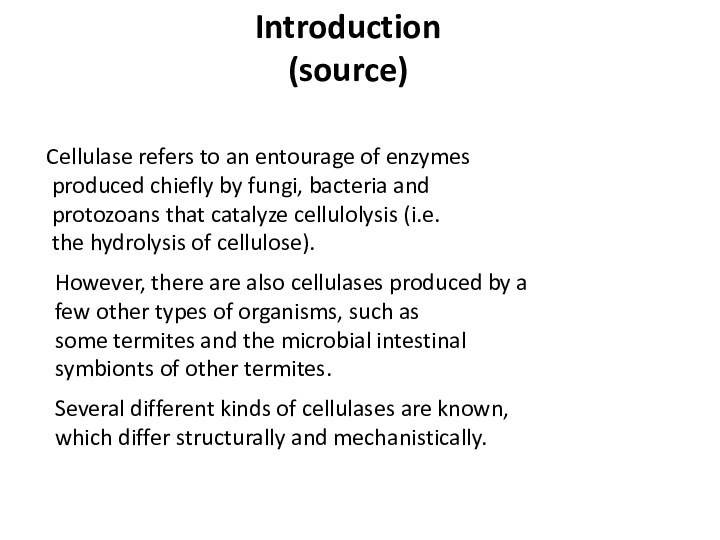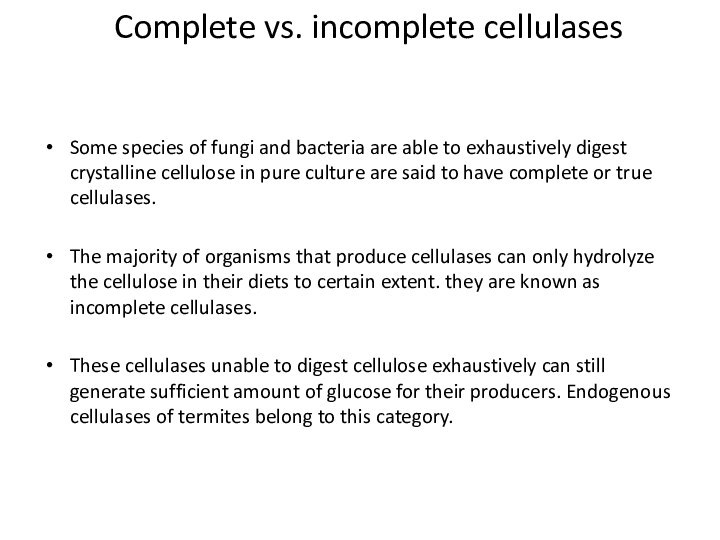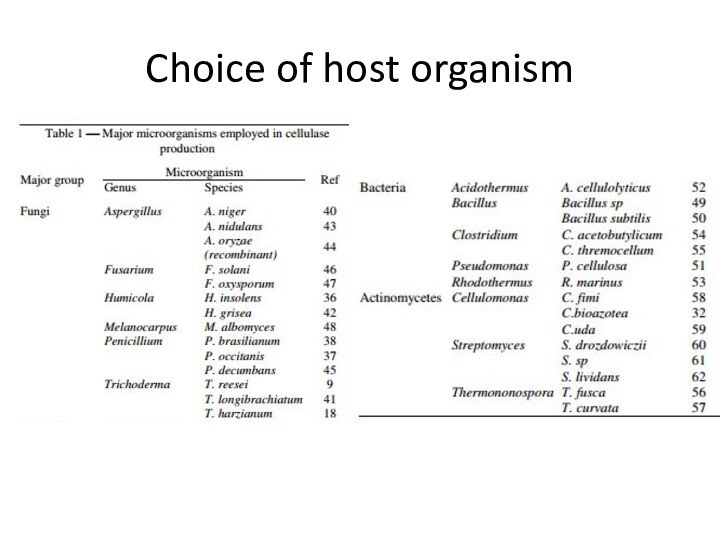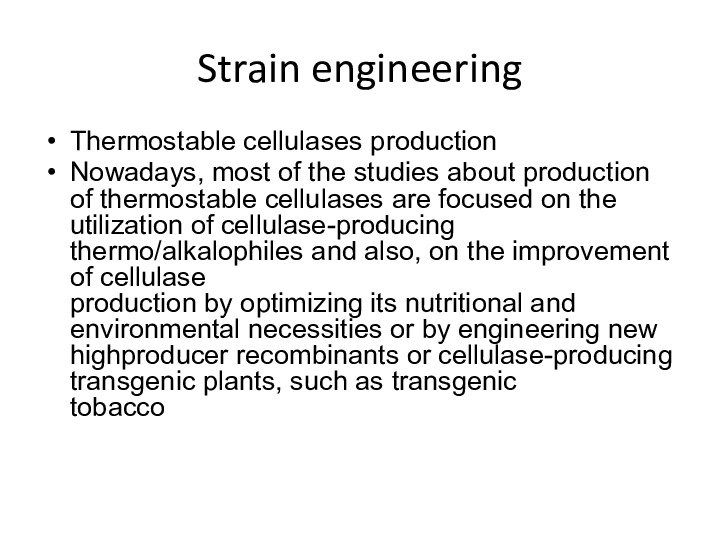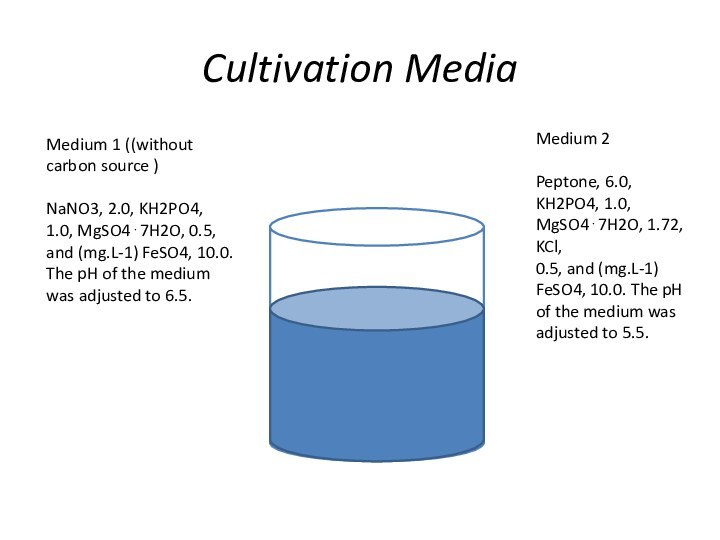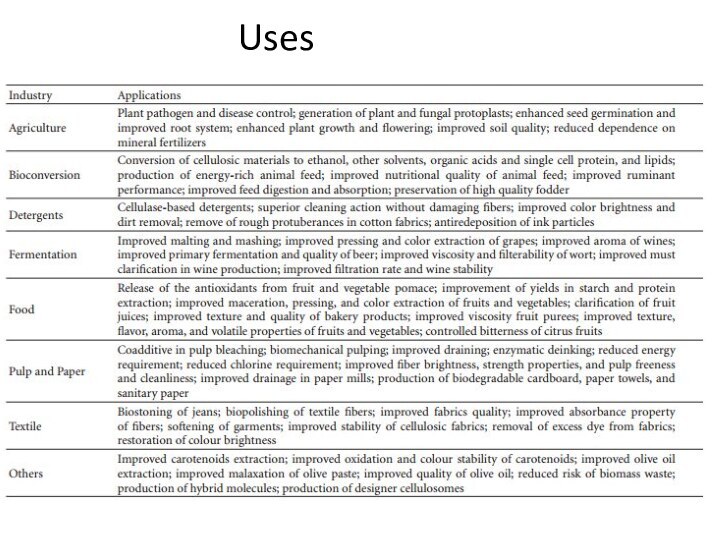enzymes produced chiefly by fungi, bacteria and protozoans that
catalyze cellulolysis (i.e. the hydrolysis of cellulose).However, there are also cellulases produced by a few other types of organisms, such as some termites and the microbial intestinal symbionts of other termites.
Several different kinds of cellulases are known, which differ structurally and mechanistically.

